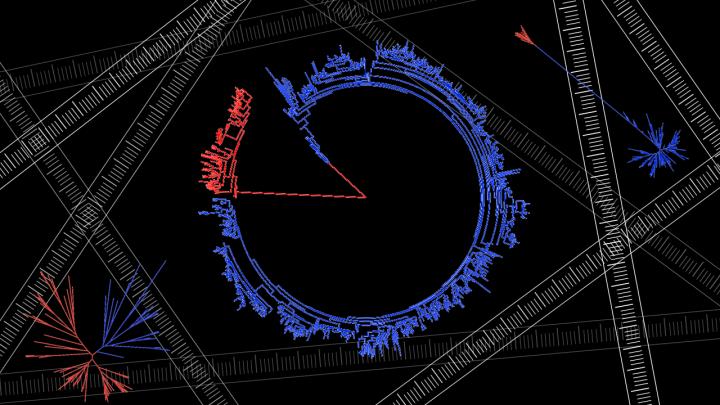
Credit: Credit: S. Shiobara, S. McGlynn, ELSI, CC BY 4.0
Biologists have long hoped to understand the nature of the earliest living organisms on Earth. If they could, they might then be able to say something about how, when, and where life arose on Earth, and perhaps by extension, whether life is common in the Universe.
Previous studies have suggested this information can be obtained by comparing the genes present in modern organisms. New research indicates that only limited information can be derived using this approach.
Biologists classify all living organisms into three major groups they call ‘domains.’ Two of these domains–the Bacteria and the Archaebacteria–consist of single-celled organisms, while the third–the Eukaryota–includes most of the larger, multicellular organisms we are all familiar with: fungi, plants and animals including ourselves. Of the three domains, the Eukaryota almost certainly evolved the most recently, but questions remain about which of the two single-celled domains arose first in the history of life.
Over forty years ago, American biologists Carl Woese and George Fox suggested that these two domains both emerged from a more primitive organism or group of organisms scientists now call LUCA, or the Last Universal Common Ancestor. Scientists would love to be able to say something concrete about what LUCA was like, what types of environment it lived in, and how it made its living.
New research from Tokyo Tech and the Max Planck Institute suggests understanding early life may be trickier than previously thought.
The research, published in the advanced access edition of the journal Molecular Biology and Evolution, was carried out by Sarah Berkemer, based at the Max Planck Institute for Mathematics in the Sciences in Leipzig, Germany, and Shawn McGlynn from the Earth-Life Science Institute at the Tokyo Institute of Technology in Japan comes in. Their analyses confirm other work which suggested that only a limited understanding of the lifestyle of the most ancient cells can be derived from DNA comparison. Although this is a disappointing result for evolutionary biologists, it is important to understand what can and cannot be known from the data that scientists are able to gather from modern organisms. Berkemer and McGlynn’s work does supply one silver lining however; while it is clear that we don’t know what the first organisms metabolised or where they lived, their work provides insight into how quickly they may have evolved billions of years ago.
To do so, Berkemer and McGlynn analyzed thousands of phylogenetic trees derived from the comparison of DNA similarity data from thousands of microorganisms to try to identify the oldest genes and when they might have evolved, and to understand how genes move between organisms to shed light on the nature of LUCA. Their careful analysis showed that early in life’s history, different gene types changed at different rates. This suggests that early mutation rates were much higher than at present and there has been a significant contribution of ‘gene jumping’ over time which makes a simple interpretation of the early ‘family tree’ of life misleading. They concluded that previous studies sometimes vastly under-sampled the available data and that the data cannot resolve these questions, but that it does show that early evolution was wildly different from what it is at present.
Professor McGlynn explains, “A fundamental question in biology is what were the first life forms on Earth. There are two basic ways to try and address this. First, we can use the comparison of gene sequences to try and understand which ones seem most ancient. Second, we can look for evidence biology may have left in the geological record.” McGlynn says this work shows that although it is clear there is a fuzzy yet remarkable general outline of a family tree of life in the available DNA sequence data, there has been so much evolutionary change that it is still as of yet impossible to say how the earliest organisms made their living or in what types of environments they lived. This is because the signal is simply too noisy due to this early genetic scrambling. As a result, we are still a long way from understanding what the most primitive organisms on Earth were like or the sorts of environments they lived in.
Importantly, however, this study marks the first time scientists have been able to say something about the pace of early evolution. This work shows there is a detectable signal of very rapid early evolution, thus, while we may not know exactly what early organisms were like, it seems likely life was mutating and evolving very quickly early on. Nevertheless, McGlynn believes it is still amazing that this limited information can be understood at all, that it still tells us important things about the evolution of life on Earth, and suggests we need to develop new ways of looking at available DNA data to find novel techniques of learning what Earth’s earliest life was like.
###
Media Contact
Joseph Caspermeyer
[email protected]
Related Journal Article
http://dx.




